Physical Address
304 North Cardinal St.
Dorchester Center, MA 02124
Physical Address
304 North Cardinal St.
Dorchester Center, MA 02124
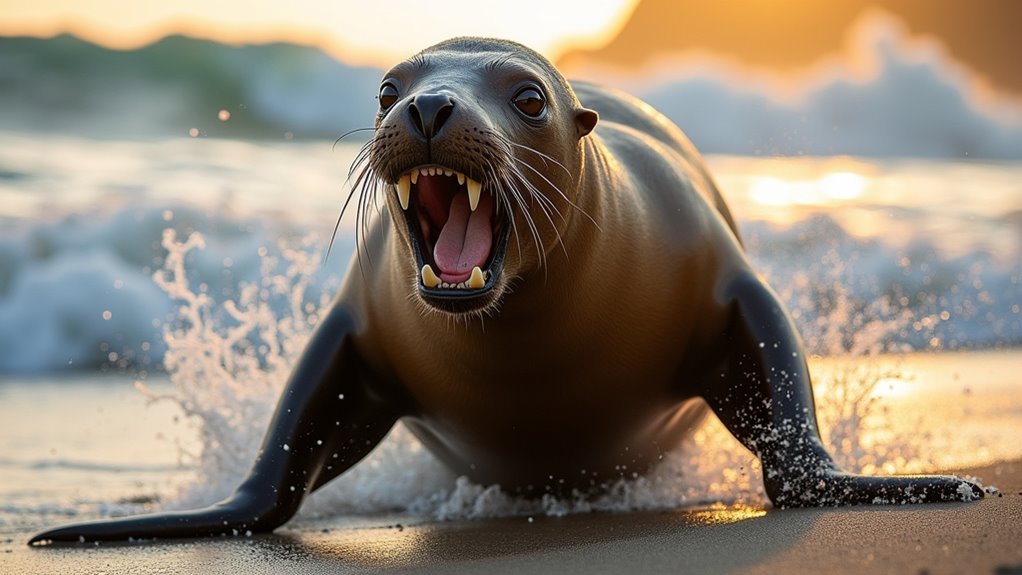
Beyond sharks and spiders, New Zealand harbors surprising dangers that could turn your dream vacation into a nightmare.
New Zealand’s most dangerous animals include White Sharks and Tiger Sharks in coastal waters, venomous Katipō and Redback spiders on land, and painful Bluebottle jellyfish washing ashore during storms. You’ll also want to watch for Grey Side-Gilled Sea Slugs containing deadly tetrodotoxin, aggressive Yellow Jacket Wasps, and the notoriously irritating Sandflies. While serious incidents are rare, knowing how to identify and avoid these creatures will considerably enhance your safety during your Kiwi adventures.
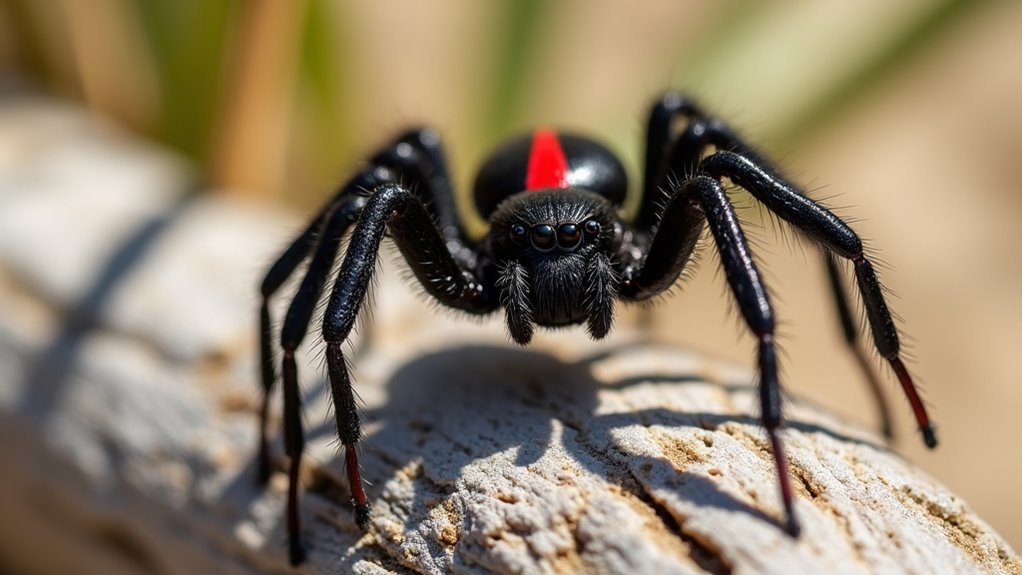
While New Zealand is known for its lack of deadly predators, the country is home to several dangerous creatures that can pose serious health risks.
Despite its reputation for safety, New Zealand harbors several creatures capable of causing serious harm to humans.
The Bluebottle Jellyfish, though not a true jellyfish, delivers painful stings with its 10-meter tentacles and can cause anaphylactic shock.
The rare Katipō spider, New Zealand’s only native venomous spider, inflicts bites requiring immediate medical attention.
Its introduced cousin, the Redback spider, delivers venom causing intense pain and potentially life-threatening symptoms.
You’ll also need to watch out for the Grey Side-Gilled Sea Slug, whose eggs and larvae contain lethal neurotoxins if ingested.
The White-Tailed Spider, while less dangerous, is commonly found in homes and can cause painful, swollen bites requiring medical care if symptoms escalate. Shaking out your shoes and clothes before wearing them is an effective precautionary measure against these nocturnal hunters.
If you’re visiting popular destinations like Rotorua’s geothermal parks, be sure to follow safety guidelines to avoid any dangerous wildlife encounters.
Among New Zealand’s most formidable marine predators, great white sharks roam throughout the country’s Exclusive Economic Zone, preferring coastal and offshore waters with temperatures between 12-24°C.
Most undertake annual migrations to tropical destinations like the Great Barrier Reef, New Caledonia, and Fiji, traveling up to 3,300 km in search of feeding and breeding opportunities.
While encounters are uncommon, understanding their behavior helps reduce risk during ocean activities. Unlike snakes which are completely absent from New Zealand’s native wildlife, sharks are a natural part of the local ecosystem. Responsible travelers can observe these magnificent creatures safely through shark cage diving experiences that promote conservation awareness.
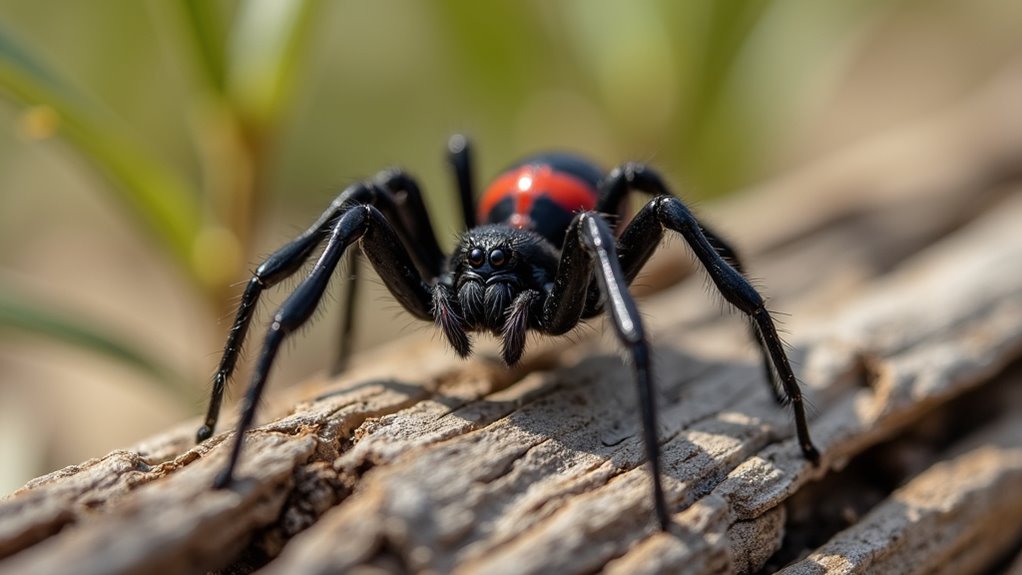
New Zealand’s most venomous spider, the katipō, inhabits coastal sand dunes throughout most of the country except for the far south and west regions.
You’ll find them most abundantly on Great Barrier Island and along the North Island’s East Coast, typically within 10-30 meters of seaward marram grass.
While their neurotoxic venom can cause severe pain, sweating, and systemic reactions, bites are rare due to the spider’s shy nature.
Despite their dangerous venom, katipō spiders rarely bite humans thanks to their naturally reclusive behavior.
In fact, there are no recorded deaths from katipō bites in New Zealand.
Their populations are declining due to habitat destruction and climate change.
The katipō is part of New Zealand’s unique native wildlife that evolved in isolation from other continents.
If you’re exploring coastal areas, you’ll face minimal risk from these timid creatures, but it’s best to avoid disturbing sand dune habitats where they create protected microclimates. The katipō spider, whose Māori name translates to night stinger, builds distinctive hammock-shaped webs with a cone-shaped retreat where they hide.
Originally from Australia, redback spiders have established themselves in New Zealand since the early 1980s, primarily in Central Otago around Wanaka on the South Island. These venomous arachnids prefer dry, sheltered environments and often build their distinctive thimble-shaped webs under ledges, in vegetation, and around homes. They are closely related to the native New Zealand katipō spider, with which they can produce hybrid offspring in the wild. New Zealand’s unique ecosystem is home to many fascinating species, making the arrival of this dangerous import particularly concerning.
You can control redback populations by clearing potential habitats like woodpiles and unused containers. While deaths have occurred in Australia, none have been recorded in New Zealand, but you should still seek immediate medical attention if bitten.
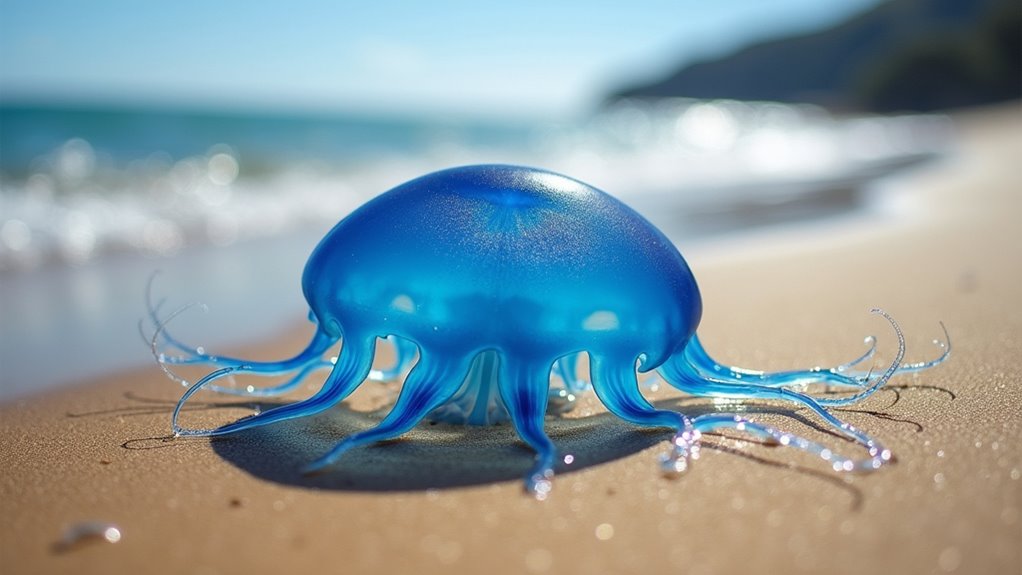
Despite their name, bluebottle jellyfish aren’t true jellyfish at all but rather colonial siphonophores composed of thousands of tiny hydroids working together as a single organism.
You’ll recognize them by their distinctive peacock-blue bladders that serve as both float and sail, allowing them to drift with ocean currents and winds.
Their tentacles can extend an alarming 20-30 meters, delivering painful stings even when washed up on beaches.
If you’re visiting New Zealand’s coastal areas, be particularly cautious after strong winds or storms, which often drive these creatures ashore.
There’s no specific antidote for bluebottle stings, so prevention is essential. The best treatment for a bluebottle sting is hot water immersion at approximately 45°C to deactivate the toxins.
Never touch or handle them, even if they appear stranded, as they can still sting.
If stung, seek medical attention as some reactions can be severe.
These marine creatures are especially common along Australian coastlines, making them a hazard to watch for during sailing adventures in popular spots like Sydney Harbour or the Whitsundays.
White-tailed spiders have gained an undeserved reputation in New Zealand as dangerous creatures capable of causing severe tissue damage. In reality, scientific evidence doesn’t support these fears. These Australian natives, recognized by the white spot on their abdomen tip, are now common in Kiwi homes.
If you’re bitten, you’ll likely experience only minor symptoms like redness, swelling, and pain. Proper wound care is essential to prevent secondary infections. While some bite victims report severe pain with a deep hole formation, scientific research has largely debunked claims of serious medical impacts.
Despite the myths, white-tailed spiders pose minimal risk to you and your pets. For those concerned about spider encounters, consider that New Zealand offers many affordable housing options in areas with lower spider populations.
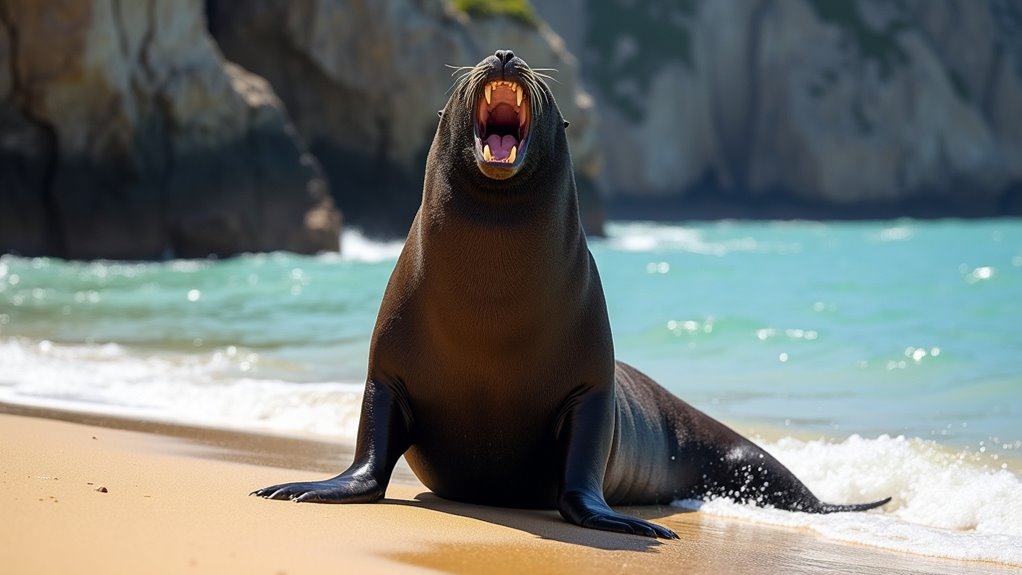
Why are New Zealand sea lions considered dangerous despite their endangered status? These rare marine mammals, with only 10,000-13,000 individuals remaining, can become aggressive when they feel threatened.
While they’re typically occupied hunting marine prey at depths up to 600m, encounters with humans can turn dangerous.
You’ll find these endemic creatures primarily on the Auckland and Campbell Islands, though they’re slowly returning to mainland New Zealand.
Don’t be fooled by their rarity—these powerful animals are comfortable in diverse environments from sandy beaches to forests and hills.
If you encounter a New Zealand sea lion, maintain a safe distance. Despite conservation efforts to protect them from fishing nets and toxoplasmosis, they’ll defend their territory fiercely when they perceive a threat. Being able to identify the sea lion correctly is crucial for both your safety and conservation reporting efforts.
When traveling in New Zealand, always remember that respecting wildlife boundaries is among the essential do-nots for visitors to this unique ecosystem.
Wild boars present a significant danger across New Zealand, occupying about 34% of the country’s land area. You’ll find these robust mammals particularly concentrated in forested, remote regions from South Westland to the Southern Islands. Their population densities vary dramatically—reaching up to 123 pigs per km² in less hunted areas. They show a clear preference for favorable habitats when establishing populations across the country.
Though categorized as minor pests in many areas, don’t underestimate their potential danger—their size, strength, and territorial nature make encounters potentially life-threatening if they feel cornered. Wild boar meat is sometimes used in traditional dishes that have become part of New Zealand’s diverse food culture.
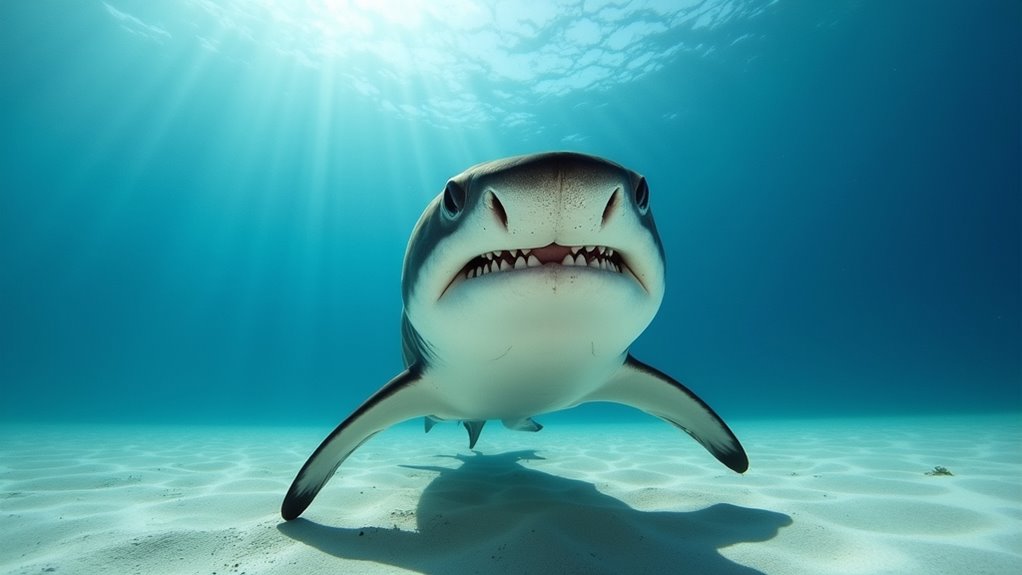
Despite their rarity in New Zealand waters, tiger sharks remain one of the most formidable predators you’ll potentially encounter offshore. These powerful sharks typically inhabit depths of 150-200m around bottom structures but occasionally venture into shallower coastal areas.
You’ll recognize them by their robust bodies with dark vertical stripes (more visible in juveniles) and impressive size—adults average 3-4.5 meters. Their powerful jaws and serrated teeth make them efficient hunters of fish, seals, and even other sharks. These sharks are notorious for their indiscriminate appetite, often consuming almost anything they encounter including inedible objects like tires and license plates. While they prefer the warmer offshore waters, tiger sharks have been spotted near some of New Zealand’s coastlines that attract travelers for their scenic beauty.
While attacks on humans in New Zealand are extremely rare with no recent fatalities recorded, it’s worth noting that tiger sharks are considered among the most dangerous shark species globally. They’re most commonly encountered by commercial long-line fishermen rather than recreational anglers or swimmers in New Zealand.
Unlike the sharks that dominate offshore dangers, the inconspicuous grey side-gilled sea slug presents a lethal threat closer to shore. These 10 cm long molluscs contain tetrodotoxin (TTX), the same deadly neurotoxin found in pufferfish.
Beware the unassuming grey side-gilled sea slug—a shoreline killer armed with the same deadly neurotoxin as pufferfish.
You’ll find them along New Zealand’s coastlines, particularly in the North Island where populations tend to be more toxic. These slugs are most commonly observed during winter and spring when they come to shallower waters to lay eggs. They represent a unique danger not found on Australian coasts, where different marine threats exist.
While no human fatalities have been reported, you should avoid handling these deceptively dangerous creatures when exploring New Zealand’s beaches.
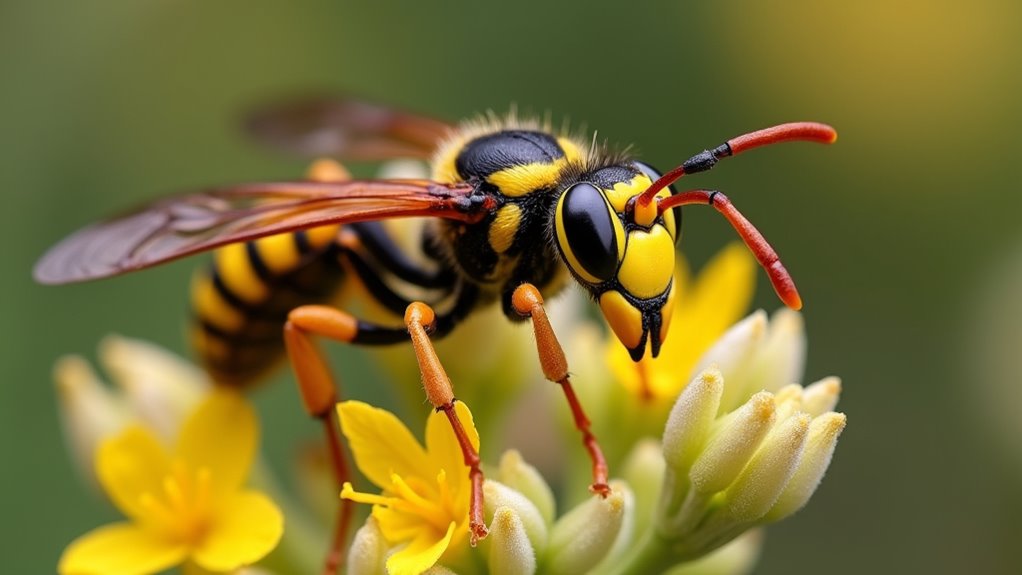
These black and yellow striped insects build paper-like nests underground or in structures, and they’ll attack in swarms if disturbed.
Their painful stings can trigger severe allergic reactions, even anaphylaxis in susceptible people.
Beyond human health concerns, they devastate native ecosystems by outcompeting indigenous species and disrupting food webs. New Zealand hosts the highest densities of social wasps in the world, particularly in beech forest areas.
The invasive wasps represent a significant threat to Māori cultural traditions related to native forest resources and ecological balance.
If you encounter a nest, don’t attempt removal yourself. Contact local authorities who can safely eliminate the colony using appropriate chemical controls.
While commonly mistaken for their namesake, New Zealand’s sandflies are actually blackflies belonging to the Simuliidae family. Of the 13 species found in New Zealand, only two bite humans: the New Zealand blackfly and the West Coast blackfly.
Don’t be fooled by the name—New Zealand’s sandflies are actually blackflies, with just two of the 13 species hungry for human blood.
You’ll encounter these tiny 2-3mm pests near flowing water, beaches, and bush areas, with the West Coast and Fiordland being particularly notorious hotspots. These pesky insects were first documented by Captain James Cook in 1773, who described their vicious bites causing swelling and itching.
Despite their small size, these daytime biters can quickly turn your outdoor adventure into an itchy ordeal. Unlike many common spiders in New Zealand, which may appear threatening but rarely cause harm to humans, sandflies actively seek out people to feed on.
You’ve now met New Zealand’s most dangerous creatures, from sharks patrolling coastal waters to tiny spiders lurking in dark corners. While these animals might make your skin crawl, they’re actually quite rare encounters in your Kiwi adventures. Stay informed, respect wildlife boundaries, and remember that in New Zealand’s natural paradise, danger is more the exception than the rule. Enjoy the breathtaking landscapes with confidence!